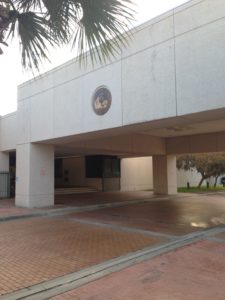Appeals 101: Why Rendition Matters
Rendition is a critical concept in Florida appeals, but not everyone understands its importance. The Fourth District this week in Guy v. Plaza Home Mortgage, Inc., No. 4D17-3335 (April 25, 2018) [.pdf] chided the Broward County Clerk’s foreclosure department for backdating final judgments when entering them on the Court docket. The decision offers a good reminder of the importance of rendition in appellate practice, and the reasons it matters.
Rendered Before Entered?
The case came to the court in an unusual procedural posture — a pro se appellant moved the court to correct the record because while the summary judgment hearing was held at 1:30 pm, the judgement’s electronic stamp “indicates that it was filed with the Broward County Clerk…at 8:35 a.m., nearly five hours hours earlier.”
The Broward Clerk explained that when the clerk’s office received the order from chambers, often a day or more after it was signed, its practice was to scan the item — which added a time and date stamp — then change the date but not the time to the date the order was signed by the Court. The result in this case is an order that appears to be rendered prior to being signed. And the result in general is that the real time docket on the date of signature does not show the order, and may not for several days. Then the order will all of a sudden “appear” that the item was added to the docket on the date the order was signed, whether or not the clerk’s office processed it on that day.
Why Rendition Matters
Let’s start with the definition of rendition: “An order is rendered when a signed, written order is filed with the clerk of the lower tribunal.” Fla. R. App. P. 9.020(i). Rendition can sometimes be tolled, such as when “there has been filed in the lower tribunal an authorized and timely motion for new trial, for rehearing” and a few other specific types of motions. When such a motion has been filed, the order is not considered rendered “until the filing of a signed, written order disposing of the last of such motions.” Id.
The problem, as the Fourth District explained, is that “[t]he time for appeal runs from the date of rendition, not the date the judgment is signed.” See Fla. R. App. P. 9.110(b). “By backdating the electronic filing stamp, the clerk changes the rendition date, possibly to the prejudice of an appellant.”
The Court pointed out that in this case, “appellant’s appellate rights were not affected,” and so the Court denied the motion to correct the record. The Court concluded “We nevertheless disapprove of the this practice as it is inconsistent with the appellate rules.”
How Backdating Rendition Affects Appellate Rights
Kudos to the Fourth District for calling out this potentially prejudicial practice. The time for appeal starts running from the date of rendition, and a backdated docket entry can unexpectedly shorten the time for appeal. We’ve seen a clerk wait 25 days to enter a final order on the docket, and then send the backdated rendered order by mail, leaving the attorney with no time to even discuss appeal with the client. The clerk’s docket is supposed even the playing field and allow all to know when an order is rendered and therefore appealable. Backdating leaves a party without notice and potentially deprives the party of the right to appeal.
The Takeaway on Rendition
When you’re not sure if an order has been rendered, it’s never a bad move to calendar your deadlines based on the date of signature, and regularly check the docket until you are sure of a rendition date. While a premature appeal can be subject to dismissal, if the order is rendered before the appellate court catches that an appeal was prematurely filed, “the premature notice of appeal shall be considered effective to vest jurisdiction in the court to review the final order.” See Fla. R. App. P. 9.110(l).
About Appeals 101
This post is part of our continuing Appeals 101 series. Click the link to find all of our posts on the basics of litigating an appeal.




